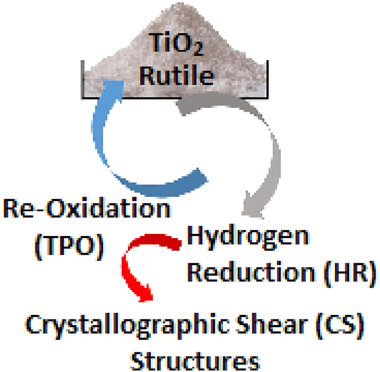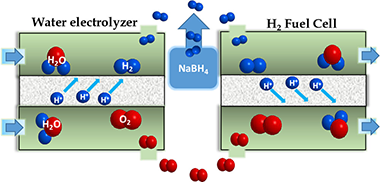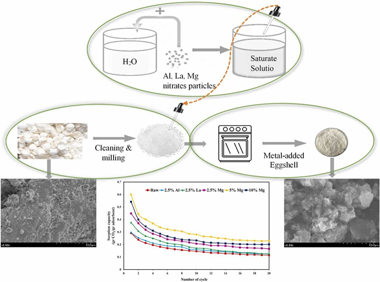Artículos SCI
2023
2023
Materiales para Bioingeniería y Regeneración Tisular
Sol–Gel Technologies to Obtain Advanced Bioceramics for Dental Therapeutics
X. Song; J.J. Segura-Egea; A.Díaz-CuencaMolecules, 28 (2023) 6967
Show abstract ▽
The aim of this work is to review the application of bioceramic materials in the context of current regenerative dentistry therapies, focusing on the latest advances in the synthesis of advanced materials using the sol–gel methodology. Chemical synthesis, processing and therapeutic possibilities are discussed in a structured way, according to the three main types of ceramic materials used in regenerative dentistry: bioactive glasses and glass ceramics, calcium phosphates and calcium silicates. The morphology and chemical composition of these bioceramics play a crucial role in their biological properties and effectiveness in dental therapeutics. The goal is to understand their chemical, surface, mechanical and biological properties better and develop strategies to control their pore structure, shape, size and compositions. Over the past decades, bioceramic materials have provided excellent results in a wide variety of clinical applications related to hard tissue repair and regeneration. Characteristics, such as their similarity to the chemical composition of the mineral phase of bones and teeth, as well as the possibilities offered by the advances in nanotechnology, are driving the development of new biomimetic materials that are required in regenerative dentistry. The sol–gel technique is a method for producing synthetic bioceramics with high purity and homogeneity at the molecular scale and to control the surfaces, interfaces and porosity at the nanometric scale. The intrinsic nanoporosity of materials produced by the sol–gel technique correlates with the high specific surface area, reactivity and bioactivity of advanced bioceramics.
Octubre, 2023 | DOI: 10.3390/molecules28196967
Fotocatálisis Heterogénea: Aplicaciones - Nanotecnología en Superficies y Plasma
Mechanistic aspects of the reduction of rutile titanium dioxide and its Re-oxidation. Development and destruction of crystallographic shear structures
Bickley, RI; Garside, GR; González-Carreño, T; González-Elipe, AR; Navío, JAJournal of Solid State Chemistry, 326 (2023) 124174
Show abstract ▽

A model is presented giving the mean dimensions of acicular octadecahedral microcrystallites of a rutile titanium dioxide powder. Reduction at 823 K, in conjunction with ESR, electrical conductivity and controlled re-oxidation has enabled the model to be applied to reduced microcrystallites. At 300 K they contain <0.1% of paramagnetic [Ti3+↑ VO: ↑Ti3+] reduced edge sites and >99.9% of reduced spin-paired [Ti3+↑↓ Ti3+ VO:] sites. These sites are situated on the external crystal faces and on polygonal bulk crystallographic shear (CS) structures inclined to the microcrystal four-fold symmetry axis. CS structures are quantum-sized [Ti4O7VO:] environments which broaden the paramagnetic signals at 78 K. Temperature programmed reduction in H2(g) reveals atomic hydrogen as a precursor to CS structure formation via a lattice template formed on microcrystallite faces. Shear structures are oxidised on their polygonal perimeters at differing rates on the respective microcrystallite faces by anionic vacancy transfer from sub-surface regions.
Octubre, 2023 | DOI: 10.1016/j.jssc.2023.124174
Materiales Nanoestructurados y Microestructura - Materiales Ópticos Multifuncionales
Understanding the Problem of Hydrogen Storage Using a Demonstration: Coupling a Hydrogen Generator Based on the Hydrolysis of Sodium Borohydride to a Fuel-Cell Kit
Arzac, GM; Calvo, ME; Fernández, AJournal of Chemical Education. 100 (2023) 4554-4558
Show abstract ▽

In the context of a green global energy paradigm, hydrogen (H-2) is a very promising energy carrier. In fuel cells, hydrogen can be used to generate electricity to drive an electric motor, producing water as its only byproduct. However, to implement hydrogen as an energy vector, developing methods for its production, storage, distribution, and use is essential. Sodium borohydride is a potential hydrogen source capable of releasing H-2 through catalytic hydrolysis. Herein, we present a demonstration that couples a hydrogen generator based on the hydrolysis of sodium borohydride to a commercial fuel-cell kit. The commercial fuel-cell kit operates using the hydrogen generated by an electrolyzer and includes a small fan to prove the successful generation of electricity. The performance of the fuel cell coupled with the borohydride-based reactor is compared to the performance achieved using the hydrogen produced by the electrolyzer. The borohydride-based reactor is designed to power the fan for 300 s and demonstrates efficient and safe hydrogen storage within a small volume of sodium borohydride. This study showcases the hydrogen cycle, the hydrogen storage problem, and the potential of sodium borohydride as a hydrogen storage material in a simple and useful way, contributing to science education and dissemination in the field of energy sustainability.
Octubre, 2023 | DOI: 10.1021/acs.jchemed.3c00590
Materiales de Diseño para la Energía y Medioambiente
Sustainable Integration of Zinc Oxide Nanoparticles: Enhancing Properties of Poly(ε-Caprolactone) Electrospun Nanofibers and Cast Films
Abdullah, JAA; Benítez, JJ; Guerrero, A; Romero, ACoatings, 13 (2023) 1665
Show abstract ▽
This study investigated the impact of adding zinc oxide nanoparticles (ZnO-NPs) to electrospun membranes and cast films made of poly(epsilon-caprolactone) (PCL). The physicochemical, mechanical, and morphological properties of the samples were analyzed. Physicochemical parameters included water contact angle (WCA), water vapor transmission rate (WVTR), permeance, water vapor permeability (WVP), light transmission (T-600), and transparency (T). Mechanical properties, such as maximum stress (6(max)), elongation (epsilon(max)), and Young's modulus (MPa), were also evaluated. Morphological properties were analyzed in terms of thickness, dispersion, and surface roughness (measured by the arithmetic (Ra) and quadratic (Rq) averages). The crystallinity and melting point, as well as the functional DPPH center dot scavenging percentage (SP%), were also studied. The results showed that adding 1 wt% ZnO-NPs improved the water barrier properties of PCL membranes and films, increasing WCA by 1%-6% and decreasing WVTR by 11%-19%, permeance by 34%-20%, and WVP by 4%-11%, respectively. The T-600 values of PCL/ZnO-NPs membranes and films were 2-3 times lower than those of neat PCL samples, indicating improved optical properties. The mechanical properties of the composite membranes and films also improved, with 6(max) increasing by 56%-32% and Young's modulus increasing by 91%-95%, while epsilon(max) decreased by 79%-57%. The incorporation of ZnO-NPs also increased the thickness and surface roughness of the samples. The SP% of PCL/ZnO-NPs increased by almost 69%, demonstrating the beneficial effects of ZnO-NPs on the system. These findings suggest that incorporating ZnO-NPs into PCL membranes and films can enhance their properties, making them well suited for various applications, such as those within the realm of materials science and nanotechnology.
Octubre, 2023 | DOI: 10.3390/coatings13101665
Reactividad de Sólidos
Metal- based eggshell particles prepared via successive incipient wetness impregnation method as a promoted sorbent for CO2 capturing in the calcium looping process
Imani, M; Tahmasebpoor, M; Sanchez-Jimenez, PEJournal of Environmental Chemical Engineering, 11 (2023) 110584
Show abstract ▽

Cyclic adsorption by using of bio-waste eggshell particles as a cheap, accessible and environmentally friendly CaCO3 source has been considered as one of the important methods to decrease or remove CO2 from the flue gas. However, deactivation of eggshell particles and CO2 capture capacity decaying with increasing the cycle's number remained as an important challenge. Using metal nitrates as one of the modification methods has been proposed by the researchers to overcome this problem. Current study investigates the influence of three metal nitrates of Al, La and Mg added to the eggshell particles via successive incipient wetness impregnation (SIWI) method to improve their adsorption performance. The TGA results at the end of the 20th carbonation/calcination cycle revealed a meaningful relationship between CaO molar conversion of eggshell modified with metal nitrates and their crystallite size as well as the surface area of the sorbents, so that the smaller the crystal size and the larger the surface area, the higher the molar conversion of CaO could be achieved. Due to the highest conversion obtained for Mg-containing sample, the effect of different weight percentages of this additive was also investigated. Results showed that 5 wt% MgO contained eggshell particles could be reported as the most outstanding sample for its improved molar conversion, capture capacity at the end of 20th carbonation/calcination cycle and BET surface area, which were 30.18%, 0.23 gr CO2/gr adsorbent and 3.5 m2/g while the corresponding amounts for raw eggshell were 17.26%, 0.11 gr CO2/gr adsorbent and 1.63 m2/g, respectively.
Octubre, 2023 | DOI: 10.1016/j.jece.2023.110584
- ‹ anterior
- 10 of 410
- siguiente ›














